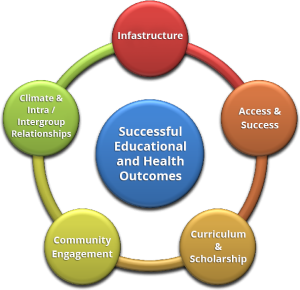- 12 March 2024
- 248
Education for All: New York State Department of Education

Introduction
The Office of the Attorney General (OAG) and the New York State Department of Education Board of Regents (SED) are jointly communicating with Local Education Agencies (LEAs) to emphasize the importance of upholding dignity, inclusion, and respect in educational decisions. These principles, enshrined in law, form the foundation for creating effective educational policies.
Through this collaborative guidance, the OAG and SED reiterate New York’s commitment to ensuring equitable educational opportunities for all students by encouraging LEAs to adopt policies and practices that promote diversity, equity, and inclusion (DEI). Both state and federal laws prohibit discrimination in educational institutions based on various factors such as race, disability, gender identity, and more.
New York State Department of Education Effects of Discrimination

Effects of Discrimination These laws mandate that LEAs take proactive measures to identify and rectify instances of discrimination that hinder educational opportunities for students. Neglecting to assess, monitor, and adjust policies, procedures, and curriculum choices may result in LEAs violating their legal obligations. Notably, two state policies—the Dignity for All Students Act (Dignity Act) and the Board of Regents’ DEI policy—deserve particular attention. The Dignity Act, effective since July 1, 2012, mandates that public schools foster an environment of civility, free from discrimination, harassment, or intimidation.
New York State Education Law and Character Education
Furthermore, the Dignity Act expanded Section 801-a of New York State Education Law, emphasizing instruction in civility, citizenship, and character education, promoting tolerance, respect, and dignity across diverse backgrounds. Amendments in 2021 included protection against discrimination based on hairstyles associated with race. In May 2021, the Board adopted a comprehensive DEI policy, following the publication of a DEI framework.
Framework for Diversity, Equity, and Inclusion

This framework, based on definitions from the University of California, Berkeley Center for Equity, Inclusion and Diversity, and the University of Houston’s Center for Diversity and Inclusion, underscores the Board’s expectations for all educational institutions to prioritize DEI in their policies and practices. Crucial Examples from the New York State Department of Education The OAG and SED highlight three critical areas where DEI must be central: teaching and learning, student discipline, and addressing bullying and harassment.
Conclusion
In conclusion, effective teaching and learning depend on collaboration, adaptability, and a commitment to continuous improvement. By fostering inclusive environments conducive to exploration and growth, educators can empower students to fulfill their potential and contribute positively to society. It is imperative that teaching and learning reflect principles of diversity, equity, and inclusion to ensure educational progress for all students. The Board of Regents remains dedicated to providing the highest quality education for New York’s students.
As outlined in the Board’s policy statement, LEAs should prioritize inclusive and culturally responsive teaching and learning practices, encompassing curriculum development, instructional materials, professional development, student support systems, and assessment measures. Such practices should aim to present diverse perspectives and avoid oversimplification, allowing all students to learn from a multitude of viewpoints.

